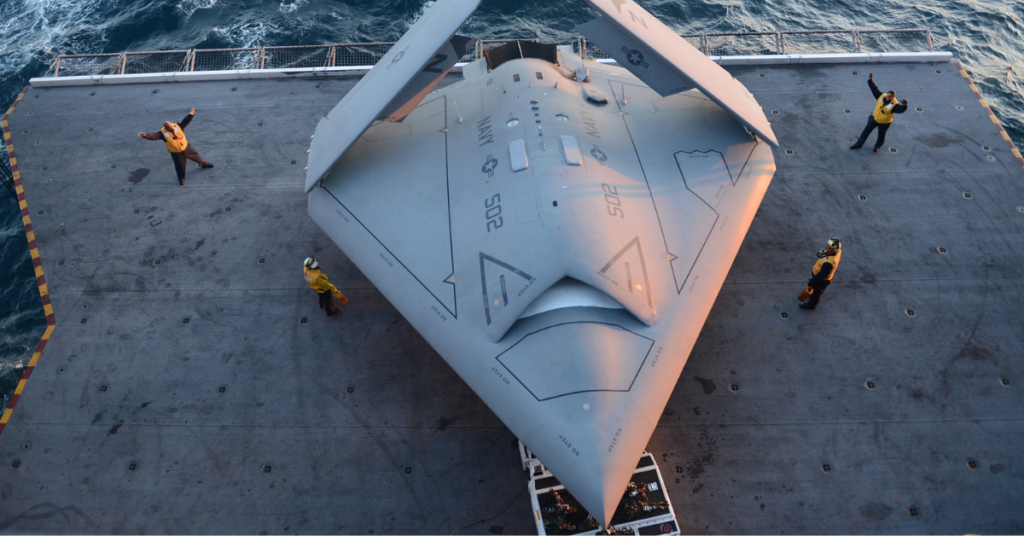
The Northrop Grumman X-47B is an American unmanned combat aerial vehicle (UCAV). Two were developed for use under the US Navy’s Unmanned Combat Air System (UCAS) Carrier Demonstration Program. First flying in 2011, the X-47B took part in flight testing and sea trials, which included many aviation firsts, setting the base for future unmanned naval aircraft.
Development of the Northrop Grumman X-47B
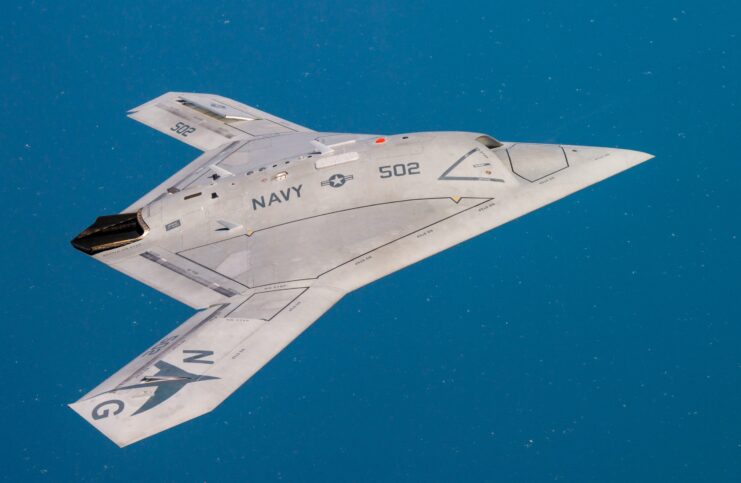
In 2000, the US Navy, considering integrating the UCAS, awarded Boeing and Northrop Grumman $2 million contracts for 15-month concept-exploration programs. As part of this, the latter developed the X-47A Pegasus. First flying in 2003, the program ended three years later, with the Navy deciding to look at other options.
In 2007, with interest reignited in the UCAS, the service awarded another contract to Northrop Grumman, as part of the UCAS-D Program. The Navy required an aircraft, which was the same size and weight as those currently in operation, but with the ability to carry various weapons within a weapons bay. The result was the X-47B.
The X-47B prototype, known as AV-1, was rolled out in December 2008. While its first flight was scheduled for late 2009, it was pushed back, with an assisted taxi test taking place that December and an unassisted one in January 2010. On February 2, 2011, the X-47B completed its first flight at Edwards Air Force Base, California. The second – the AV-2 – conducted its first flight later that year.
Northrop Grumman X-47B specs
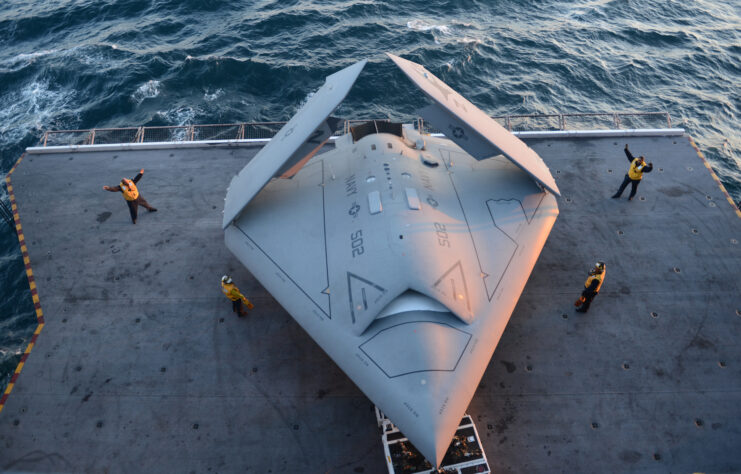
The X-47B’s overall design is similar to that of the Northrop Grumman B-2 Spirit. The airframe consists of a blended-wing body, with no vertical stabilizer. Above its pointed nose sits the air intake for a single Pratt & Whitney F100-220U turbofan engine. Up to 4,500 pounds of ordinance is stored within two large weapons bays on the underside of the airframe, and the aircraft’s wings fold up for ease of storage aboard carriers.
The Pratt & Whitney F100 was initially designed in the late 1960s, and was first equipped by the McDonnell Douglas F-15 Eagle. Variants have also been used with the F-15E Strike Eagle and the General Dynamics F-16 Fighting Falcon. With 14,590 pounds of thrust at cruising speed and 23,770 pounds with afterburner, the F100 allows the X-47B to reach a top speed of Mach 0.9.
Flight testing
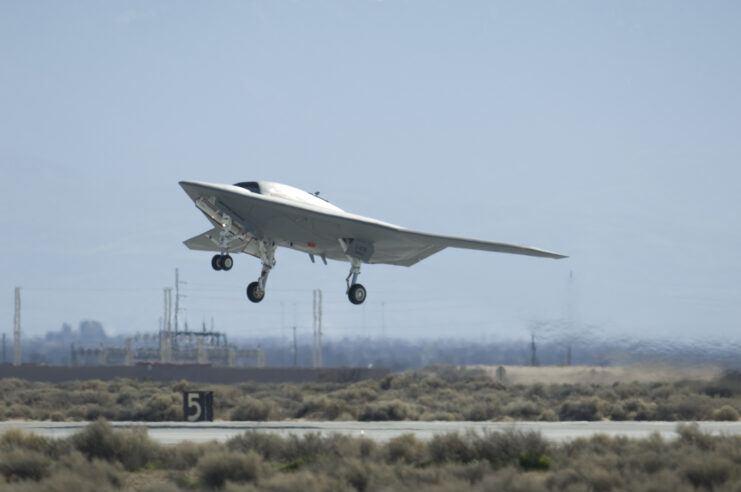
After their first flights, the two X-47Bs entered into a three-year test program. Comprised of 50 flights from Edwards Air Force Base and Naval Air Station Patuxent River, the X-47B was set to enter at sea testing in 2013. Performing exceedingly well, it was decided after only 16 flights that the aircraft would be sent early.
In May 2012, before joining an aircraft carrier, the X-47B underwent electromagnetic interference testing of its proposed electronic warfare systems at NAS Patuxent River. That June, AV-2 joined its predecessor and began land-based catapult launches and arrested landing tests, before going to sea.
In November 2012, the X-47B began sea trials aboard the USS Harry S. Truman (CVN-75), out of Naval Station Norfolk. Initial carrier-based tests checked the aircraft’s compatibility with the vessel’s communication systems, flight deck and hangar bays. Performing “outstandingly,” the X-47B returned to NAS Patuxent River for more shore-based tests.
Firsts by the X-47B
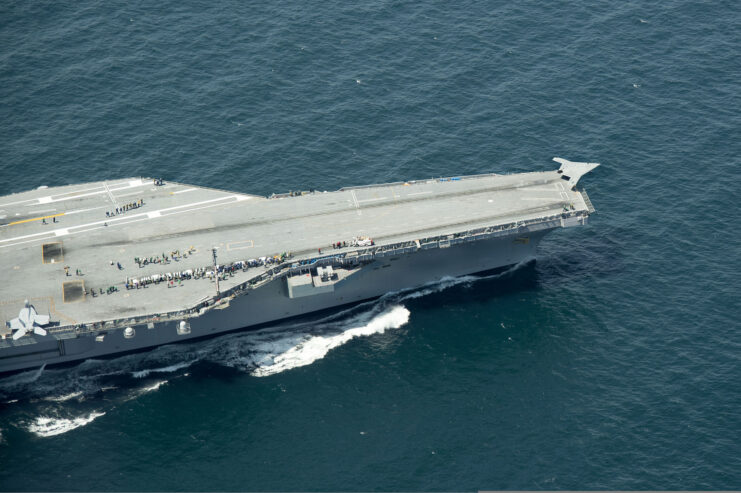
After successful carrier-simulated landings, the X-47B joined the USS George H.W. Bush (CVN-77) in the Atlantic. On May 14, 2013, it became the first UAV to take off from a carrier via catapult. On May 17th, it continued tests aboard the aircraft carrier with touch-and-goes while the ship was underway.
Another first came on July 10, 2013, when a X-47B flew from NAS Patuxent River to George H.W. Bush, completing the first UAV landing onboard an aircraft carrier. A second was also completed, with a third being aborted due to the failure of the navigational system.
Between 2013-15, the X-47Bs were deployed aboard carriers as part of three test phases. These included touch-and-goes, arrested landings, catapult launches and wave-off procedures. These were all done in an effort to try to integrate the UAV into a full carrier air wing. At the conclusion of the program, the X-47B had completed five catapult launches, four arrested landings, nine touch-and-goes, and deck handling operations.
The tests saw the aircraft complete many other firsts, including on August 17, 2014, when an X-47B took off from and landed on the USS Theodore Roosevelt (CVN-71), with a McDonnell Douglas F/A-18 Hornet acting as a chaser. This marked the first time a UAV and manned aircraft worked together onboard a carrier.
In 2014, equipment for aerial refueling was added to the X-47B for testing. In April 2015, it completed the world’s first fully autonomous aerial refueling (AAR) with an Omega Air KC-707 tanker. This event also marked the final test for the aircraft.
Life after testing
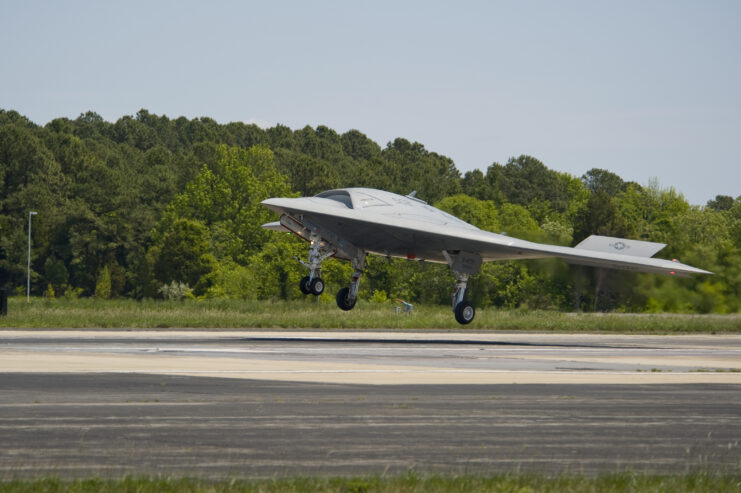
In February 2015, the US Navy announced that it would begin competition for contracts for new UAV, which would be expected to enter service in the early 2020s. It was also decided that, in fear they may cost too much and may not be as stealthy as needed, the X-47B would not be contracted to become the service’s first operational UAV.
In April 2015, it was decided that the two UAVs would be put on display at the National Naval Aviation Museum and NAS Patuxent River. While it’s been said that it was the plan all along to make the X-47Bs museum exhibits after their testing, this decision was reversed in July 2015, and the aircraft were to remain in flying condition for future tests. Both were transferred to Northrop Grumman’s Palmdale, California plant, where they remain to this day.
Impact on Unmanned Aerial Vehicle (UAV) design
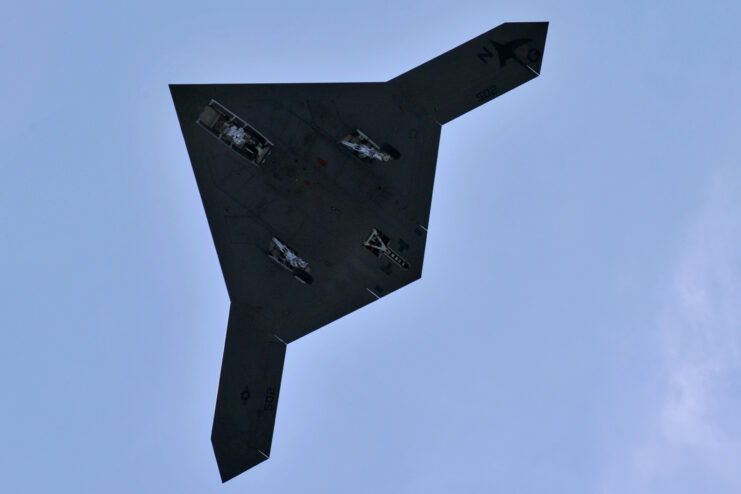
While the X-47B won’t enter service as the Navy’s first UAV operated from an aircraft carrier, it set the stage for future unmanned aircraft. The tests successfully performed on it proved unmanned aircraft could be integrated into the service’s aircraft fleet, operating side-by-side with its current air-wings.